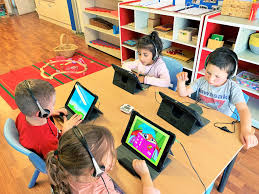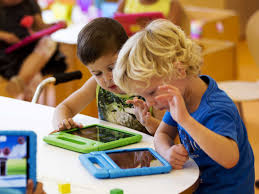Introduction and Importance in Facilitating Creativity
Technology is an exciting tool for fostering creativity, offering kids ways to express themselves, solve problems, and experiment. NAEYC (n.d.) highlights how technology can help children create digital art, tell stories, and design their own digital worlds, sparking their creativity in new and exciting ways. By using digital tools, children develop skills in coding, problem-solving, and critical thinking all essential parts of the creative process. As technology continues to shape our world, early exposure helps kids build the foundation for digital literacy, while allowing them to engage in creative expression through innovative means.
Creativity Theories and Perspectives
Technology encourages creativity by giving children the tools to transform their ideas into digital formats. Piaget (2013) explained that children learn best when they actively engage with their environment, and technology allows for interactive, hands-on learning. Vygotsky’s sociocultural theory also plays a role, as technology provides opportunities for collaboration. When children work together on digital projects, they learn from each other’s ideas and combine their creativity. Pantoya (2015) emphasize that introducing technology in early childhood not only builds creative thinking but also helps develop an engineering identity, fostering problem-solving and design thinking through interactive learning.

Resources, Materials, and Digital Technologies
Educators can use various digital tools to support creativity, including apps like Toca Boca and ScratchJr, which allow children to create games, animations, and stories. Tablets, digital cameras, and basic video editing tools also provide great opportunities for creative expression, allowing children to capture, edit, and share their ideas. As NAEYC (n.d.) notes, age-appropriate technology can encourage exploration and creative thinking while building digital literacy. These resources offer children a range of ways to express themselves, collaborate, and explore new ideas digitally, all of which foster creativity.
Learning Experiences
0–2 years: Children engage with simple touch-screen apps that introduce colors, shapes, and sounds, promoting early cognitive and sensory development (Berk, 2021).
2–3 years: Children use drawing apps on tablets to create simple images, building fine motor skills and creative expression (Piaget, 2013).
3–5 years: Children create simple animations on ScratchJr, learning coding concepts and expressing their ideas through interactive play (Miller & Almon, 2021).
6–8 years: Children collaborate on creating a digital story using video editing tools, combining text, images, and sound to bring their ideas to life (NAEYC, n.d.).
Critical Reflection and Evaluation
The digital drawing activity for toddlers (2–3 years) was a fun way to introduce them to technology, but some children struggled with the small screens. I would consider using larger tablets and providing more support in guiding their interactions. The digital storytelling project for older children (6–8 years) allowed for creativity and collaboration, but some kids found the video editing tools overwhelming. I would spend more time introducing the software and giving them a chance to experiment before starting the project. This would help them feel more confident and allow for a smoother, more creative experience.

